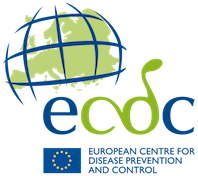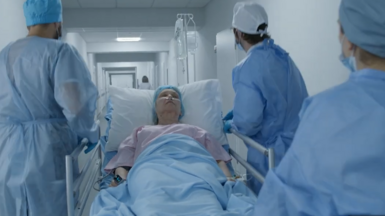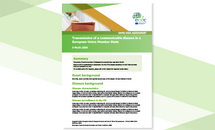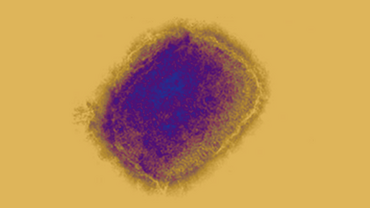Risk assessment for the EU/EEA of the mpox epidemic caused by monkeypox virus clade I in affected African countries
The monkeypox virus (MPXV) clade I epidemic that has been affecting the Democratic Republic of the Congo (DRC) since November 2023 has recently spread to several other African countries including Burundi, Rwanda, Uganda and Kenya. The size of these outbreaks could be larger than reported due to under-ascertainment and under-reporting.
Epidemiological situation
On 15 August 2024, one case of MPXV clade Ib was reported in the EU/EEA and more imported MPXV clade I cases will likely occur. It is therefore important for European countries to be prepared to handle such imported cases and prevent secondary transmission.
In countries reporting clade I cases, human-to-human transmission through close physical contact and through both sexual and non-sexual transmission has been documented. Although all age groups are represented among cases infected with MPXV clade I, preliminary data show that infections by clade Ib virus concern mostly the adult population, whereas infections by clade Ia concern mostly children. To date, there are still significant uncertainties about the main transmission routes, transmissibility, severity, and natural disease history, and whether these differ between the two circulating subclades of clade I MPXV.
Mpox symptoms usually appear 6–13 days (up to 21 days) after infection. The clinical manifestation of the disease includes general febrile symptoms, a distinct rash (papules) on the skin and sores on the mucosa, back pain and muscle aches. The rash may spread quickly throughout the body within three days of experiencing the initial symptoms. Most people experience mild to moderate symptoms that usually last two to four weeks, followed by a full recovery.
Risk assessment
In the affected areas in the African continent:
The likelihood of infection with MPXV clade I for EU/EEA citizens travelling to or living in the affected areas and having close contact with affected communities is high, while the likelihood of infection is low when contacts with affected communities are avoided. The severity of the disease is expected to be low. Overall, the risk for these populations is moderate and low, respectively.
In the EU/EEA:
The overall risk for the EU/EEA general population is currently assessed as low, based on a very low likelihood and a low impact. The likelihood of infection with MPXV clade I for close contacts of possible or confirmed imported cases is high, yet the severity of the disease is expected to be low. However, in this same group, the severity of the disease is considered moderate amongst those with underlying conditions, particularly individuals who are immunocompromised. Overall, the risk for these populations is moderate and high, respectively.
The likelihood of infection for people with multiple sexual partners who were not previously infected with MPXV clade IIb or were not vaccinated in the 2022 outbreak is considered moderate. This assessment is based on the difficulty of controlling the spread of infection during the clade II outbreak in 2022/23 in this risk group. Although the severity of the disease would in most instances be low, people who are immunocompromised and those with an untreated HIV infection could experience moderate clinical severity. Overall, the risk for these populations is moderate.
Recommendations
To contain any possible outbreak in the EU/EEA, detecting cases and preventing secondary transmission is vital. This can be achieved through:
- Raising awareness among clinicians and other health professionals about possible travel-associated mpox cases caused by MPXV clade I, including the possibility of different clinical presentations, transmission through sexual and non-sexual routes and different groups affected than in previous outbreaks.
- Ensuring effective surveillance, laboratory testing (including molecular clade identification), epidemiological investigation and contact tracing capacities. Importation of MPXV clade I infections, or notable mpox events (outbreaks related to mass gathering events or other specific settings, re-infections among cases, rise in cases among women, children or other risk groups) should be promptly reported via EpiPulse and/or EWRS. All mpox cases should be reported to the European Surveillance System (TESSy).
- Providing advice to travellers to affected areas on national guidance for vaccination against mpox prior to travelling.
- Rapidly isolating any suspected cases until proven negative and, if positive, until symptom resolution.
- Implementing contact tracing and testing close contacts of confirmed cases following ECDC testing protocols.
- Providing travel advice to people visiting or returning from countries with confirmed MPXV clade I outbreaks.
- Continuing risk communication activities and working with civil society organisations to engage population groups at higher risk of infection.







